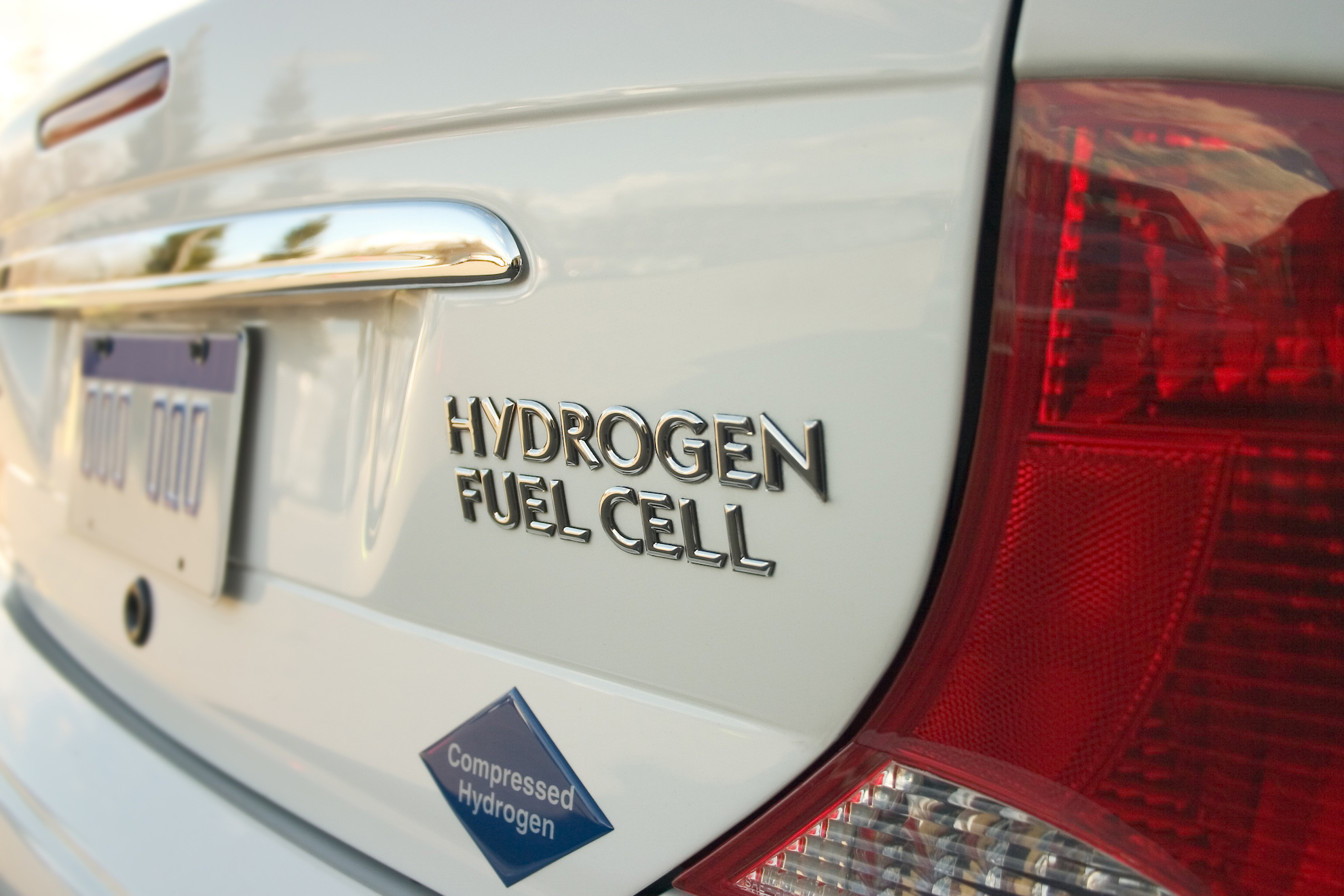
DOWNLOAD
DATE
Contact
Key considerations for green H2 deployment
Green hydrogen (H2) has become a key topic on the agenda of policy makers and industrial players, driven both by the global decarbonization push and the commercial opportunities that it could bring. Although ambitious targets have been set and multiple projects announced, the road toward the green H2 economy is contingent on several critical conditions across the policy, supply, infrastructure, and demand front, which we explore in this Viewpoint.
The case for green hydrogen
Ever since the Paris Agreement in 2015, there has been an increased focus on decarbonization globally. Green H2 has been identified as a key technology to bridge decarbonization ambitions and, in particular, support the transition toward a greener future in hard-to-decarbonize sectors. To this end, over 45 countries have enacted ambitious policies and plans to boost hydrogen use, which has generated myriad commercial leads across the globe and driven interest similar to the early days of solar PV. The H2 economy is touted to become a US $700 billion economy by 2050 with green H2 expected to take a dominant share. (Source: Bloomberg) A diverse set of players are currently repositioning and exploring opportunities in the green H2 paradigm, and many investments are underway with a plethora of projects being announced monthly across the globe.
Despite this momentum, the path to green H2 is not straightforward. Many requirements are needed to enable successful deployment. In this Viewpoint, we investigate the conditions necessary for successful deployment across four value chain elements: (1) steering policies and regulations, (2) competitiveness and reliability of supply, (3) availability of adequate transport infrastructure, and (4) demand pull.
Steering policies and regulations
Supranational, national, and regional policies supported by adequate regulatory and incentive instruments are at the cornerstone of the green H2 economy and imperative in the short to medium term to establish conditions for success and to fast-track deployment given the cross-sectorial nature of hydrogen applications and the need for economic-financial support in the short term.
In fact, while most supranational and national H2 policies initiated by the EU, Japan, Germany, Australia, and other countries are clearly targeting the decarbonization of their economies, there are at least two additional reasons why they might advocate for green H2. First, it offers an opportunity for economic development and energy supply diversification; KSA as well as UAE are examples of diversification away from hydrocarbon dependency. The other objective is to maintain or achieve technological leadership with an associated positive GDP along with employment impact; one such example is Germany, which might be willing to reaffirm its technological supremacy in the electrolyzer manufacturing business.
A key reinforcing element for the green H2 economy is foreign policy, and, in particular, the formation of a synergic, bilateral, or multilateral agreement, such as those observed recently. In 2021, Germany and KSA announced a strategic alliance on green H2 development to collaborate on the generation, processing, use, and transportation of clean hydrogen for the benefit of both countries. This partnership will help Germany maintain its technology leadership as well as attain targets set in its policy. As for KSA, the alliance will help bolster it as a global producer of green H2. Another example is the Memorandum of Understanding signed last year between Singapore and Australia to share knowledge and collaborate on new low-emissions technology.
On top of traditional subsidies, demand-side measures, and green procurement policies, several regulatory/incentive instruments are available (see figure below), such as the carbon tax and emissions trading system (ETS); research, development, and innovation (RDI) funding; green H2 certification; and contract for differences (CFDs):

- Carbon taxes and ETS remain a key lever for deployment of green H2 as this bridges the economic gap with grey H2. Recently, EU ETS carbon price reached its highest level (over 50 EUR per metric ton), driven by investors that foresee an increase in demand in the long term. (Source: Bloomberg) The EU also plans to bolster its current ETS mechanism with a carbon border adjustment mechanism to eliminate unfair advantage outside Europe, creating more advantage for green H2.
- RDI funding is another instrument being consistently deployed across developed/developing markets with the objective of stimulating innovation in H2 technology. For example, A*STAR in Singapore offers a low-carbon energy R&D fund with one thematic area focused on H2 supply, storage, and downstream usage.
- The development of a green H2 certification scheme provides a guarantee of origin for hydrogen and its derivatives. Such certification is important as offtakers seek to develop zero carbon products due to increased environmental awareness and regulatory pressures. Certification programs are being discussed at policy levels in Europe and Australia and are expected to roll out soon.
- CFDs, employed previously with wind farms, are yet another tool that can accelerate the deployment of H2 supply facilities. In Germany, this instrument is being discussed in conjunction with the concept of a market maker (MM). The idea is basically to have an entity, the MM, that tenders longterm supply contracts on one side and demand contracts on the other. CFDs will then be used to compensate the difference between the two in order to help fast-track the creation of a global green H2 market.
Competitiveness and reliability of supply
While policies and regulations remain a key consideration for successful deployment of green H2, investing into green H2 supply is contingent on three critical factors: (1) cost-competitive production of green H2, (2) ability to deliver H2 to customers in a reliable manner, and (3) supply risk hedging to increase willingness of investors to embrace the embryonic green H2 opportunity (see figure on right).
The production of green H2 is a high energy-intensive process. Roughly, each kg of green H2 produced via electrolysis requires 50 kWh of electricity. This translates to a cost structure where electricity often exceeds 60% of the production cost with CAPEX representing 30% and other OPEX representing the rest. Securing a location with access to an affordable, abundant, and stable feed of electricity from renewable sources directly or through an existing nearby grid infrastructure is key. This is often a bottleneck. The availability of a dual source of renewable energy for large periods enhances feasibility.
While many locations have an abundance of a single source of renewable energy, not many can offer more than one to provide electricity to run an electrolyzer plant at a 50%+ capacity factor, which is often the minimum requirement to ensure commercial attractiveness even in areas with low renewable electricity prices. One example is NEOM in KSA, where the joint venture of NEOM, ACWA Power, and Air Products is developing the largest GW-scale green H2 plant in the world, capitalizing on its access to abundant and inexpensive renewable energy. The availability of both solar and wind renewable energy in NEOM is expected to yield an estimated combined electricity cost of US $2-$3 ct/Kwh, which will drive the total cost of producing green H2 to the vicinity of $2/kg. Another example, which benefits from its close vicinity to the European market, is Morocco, with its abundance of both solar and wind. Another important cost driver is CAPEX, which is expected to continue decreasing from the current $1,000/kW for commercial scale alkaline technology electrolyzer plants and $1,400/kW for proton exchange membrane electrolyzer plants. (Source: IRENA) The expected cost decrease will be from both learning (in the range of 5%-10% by 2030 due to innovation and standardization) and scaling with GW-scale plants expected to yield additional scale economies of over 10% compared to the 100-1,000 MW plants.
Another important condition for successful deployment of H2 is the reliability of supply (i.e., the ability to provide continuous, uninterrupted supply to customers). For many applications, H2 will be in constant demand mode, with no tolerance for supply interruptions, which may create heavy economical losses on the demand side in industries like chemicals, petrochemicals, and steel. To ensure a continuous supply, it may be warranted to either have a configuration of both electrolyzers and existing steam methane reformers, producing both green and blue hydrogen, or to develop and utilize storage facilities.
The third critical factor for successful H2 deployment is supply risk hedging through the formation of consortiums, which allows players to aggregate capabilities and equity, leverage scale economies, and lock in demand. Examples include: Smart Delta Resources consortium in South West NL and East Flanders, Belgium; Total and Engie’s recent cooperation agreement to develop France’s largest renewable hydrogen production site; and the newly formed Mubadala, ADNOC, and ADQ alliance to grow the green H2 economy in Abu Dhabi, UAE.

Availability of adequate transport infrastructure
To support high H2 demand expectations, a key prerequisite to be fulfilled is the development of a reliable, cost-effective transport infrastructure. Various transport modes are currently being considered and even developed or implemented utilizing pipelines, ships, and sometimes a mix of both. Pipeline transport can be achieved by converting the existing natural gas network or by building new infrastructure – widely considered the most economic form of transport. Alternatively, shipping can transport H2 in its liquid form, as ammonia or liquid organic hydrogen carriers (LOHC).
Europe has a developed gas infrastructure in place, with an energy transport capacity 10 times larger than the electricity sector, which is, in theory, eligible for rededication. National plans for the development of an integrated H2 network focus primarily on the conversion of existing natural gas pipelines. Examples include plans by Germany’s Association of Transmission System Operators for Gas (FNB Gas) for a 1.293 km H2 transmission network by 2030 and Gasunie’s efforts in the Netherlands for the implementation of a 10-15 GW hydrogen backbone by 2026. Depending on respective pipeline design and material properties, different degrees of modification requirements are necessary. In the case of Germany and the Netherlands, 80%-90% of the natural gas pipeline network is technically viable for rededication. (Source: Gasunie) Even without adjustments to the infrastructure, it is already possible today to blend 10% and, in certain cases, even more hydrogen into the natural gas network for its transportation.
The construction of new H2 pipelines is also an alternative for H2 backbones. Despite being more expensive than repurposing existing natural pipelines ones, H2 pipelines are still over 10 times cheaper than electrical infrastructure for the same transported energy capacity. Nevertheless, the feasibility of such pipelines depends on scale, which is contingent on materialization of demand and the ramping up of H2 production. An intermediate step for consideration is the pipe-in-pipe solution, where a small hydrogen pipe is put into a natural gas pipeline with transport capacities of 1-2 GW.
As for shipping, critical points are primarily in ensuring a high density of H2 in the ship and minimizing losses during transport. Both points can be addressed by liquefying H2 (LH2) or by integrating H2 into larger carrier molecules, such as ammonia (NH3) and LOHC – aromatic compounds. The conversion of H2 into LH2 requires strong cooling (down to -253 °C) and/or compression before transport, which leads to about 45% conversion losses with additional losses during transport. NH3 and LHOC provide high-energy density and are easier to transport. LOHC has similar properties to oil-refined products and can be transported as a liquid without the need for refrigeration. However, NH3 and LOHC require a conversion before transport and a reconversion to H2 at the destination, since they often cannot be used as an end product.
We have modeled a real-life example of the transport of H2 from KSA to Germany using various modes of transport (see figure below). Long-distance transport cost, including conversion, reconversion, and compression for the three shipping carriers, is estimated below 3 EUR/kg with a slight cost advantage for NH3. NH3 and LOHC have a significantly lower long-distance transport cost than LH2 due to higher density; however, this is largely counterbalanced by the additional conversion and reconversion cost. Pipeline transport remains the most cost-effective with additional potential savings of 25%, provided that significant scale is available and the pipeline is constructable between production and demand points.

Different modes of transport should be complemented by economical, large storage solutions to balance supply and demand. Storage facilities are considered an integral part of the H2 infrastructure. Some suitable forms of storage are salt caverns/domes, depleted gas fields, or aquifers.
Demand pull
Demand for hydrogen in the long term is likely to primarily stem from industrial applications, transport, and power and heat. Industry demand is forecasted to represent 35% of the total demand in 2050 in a net zero emission scenario. (Source: IEA) For many industries, green H2 is possibly among the few ways to survive and comply with the Paris Agreement. The main use of green H2 in industry is carbon neutral feedstock for syngas, bioethanol, steel production, and so forth. In fact, the iron and steel segment is responsible for 2.4 Gt of CO2 emissions worldwide. (Source: IEA) Employing green H2 in steel production as the sole or auxiliary reducing agent could decrease over 90% of the emissions. Already embracing the change, German multinational conglomerate ThyssenKrupp intends to switch its steel production to direct reduction by 2022 and has announced a partnership with RWE to supply green hydrogen. In the transport sector, green H2 is seen as a real alternative in use cases where electrification is not an alternative (e.g., in shipping, heavy truck, and aviation segments). In power and heat, H2 can also be used as a fuel for power generation, peak shaving, or seasonal storage. Additionally, green H2 could play a significant role as an alternative to natural gas to generate heat for buildings (micro-combined heat and power could replace natural gas boilers in private households).
Given the magnitude of the risks involved in an H2 investment project, green H2 producers seek to secure large and long-term demand to ensure viability of their intended large production and transportation facilities. This is achievable through partnerships or long-term contracts with large offtakers. These offtakers could be players in the chemical, petrochemical, and steel industry that can guarantee large, single-point demand for long periods. Another factor to consider for producers is origin of demand. Although, the green H2 economy is expected to emerge on a global scale, producers may have a preference for domestic demand as it tends to be more stable and is not influenced by geopolitical factors or supply chain disruptions, such as the recent disruption of the Suez Canal. Buyers may also share similar preference, especially if they can take advantage of large reductions in transport cost due to close vicinity of production.
Insights for decision makers
While there is increasing momentum and consensus toward the creation of a green H2 economy in the medium to long term, developers are faced with the short-term dilemma on when, how, and where to enter the market. To make an informed decision, it is paramount that developers analyze the opportunities and limit related risks under four main lenses: (1) availability of adequate policies and regulations, (2) possibility of establishing a competitive and reliable supply, (3) availability of adequate surrounding infrastructure and sufficient renewable energy, and (4) security and scale of demand. To maximize chances of success in the embryonic green H2 economy, developers should evaluate the opportunity to create a consortium with players that can complement skills, secure long-term demand, provide access to infrastructure, commit necessary capital, and jointly seek government commitment to the H2 economy.






